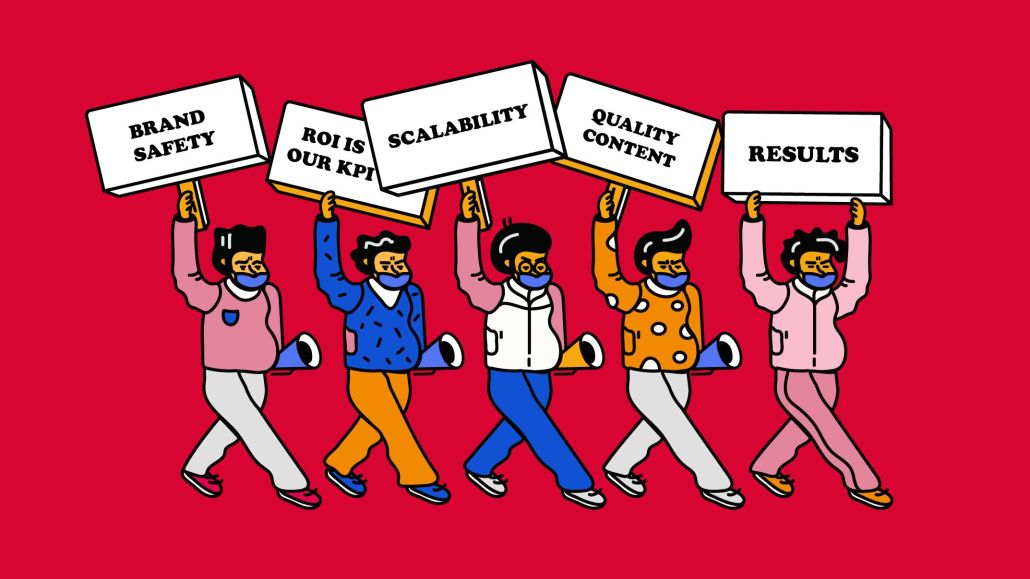The 4A’s is telling its members how to crack down on unscrupulous ad tech players

The vast majority of digital display ads will be executed next year, accounting for 91% of spend in what should be good news for all parties involved in ad tech.
But with great power comes great responsibility.
And in an industry where ‘accountability’ is a near-constant catchcry from any given conference stage, that means audits, as marketers demand assurances that a media dollar spent is a dollar invested.
In recent months the ANA signaled its intention for its members not to have the wool pulled over their eyes, and now the U.S. trade body representing media agencies wants to do likewise — but as recent headlines attest, this is easier said than done.
‘Agencies’ rocky path’
The 4A’s will today publish a whitepaper for members — dubbed ‘The Rocky Path Agencies Are Forced To Traverse’ — with advice on how to reduce the complexity of programmatic trading, a process commonly referred to as “supply path optimization.”
The paper addresses the usual laundry list of complaints about “black box programmatic technologies” including everything from click-fraud, frequency-capping, plus the quality/misrepresentation of inventory.
Kevin Freemore, svp, media, technology and data at the 4A’s told Digiday that while there is much of the programmatic ecosystem that agencies don’t have full transparency on, such as dynamic take rates or the intricacies of content verification, the report aims to address some ‘misnomers’. For instance, the vast majority of holding companies do not trade programmatically on poorly curated open ad exchanges, according to Freemore, who said that this is in contrast to popular belief.
“SPO has been used interchangeably with ‘transparency’ but they’re two very different things,” he added. “It can be optimizing campaigns to performance publishers with higher conversions [as opposed to branding KPIs], or shifting budgets away from areas with higher levels of fraud or creating private marketplaces.”
Marla Kaplowitz, president and CEO of the 4A’s, recommended that media agencies work with companies and their partners to vet their processes for finding bad actors and then excluding them from their supply chain.
“If you look at the paper it’s pretty in-depth and we’re providing it as a guide to be sure that agencies and marketers can go through all of these to mitigate as many potential issues as possible, yet we also know that it is not 100 percent foolproof,” she added.
“There’s a lot to understand and agencies are in an interesting situation as they’re aggregating, pushing and trying to understand the best that they can, but these are real issues, and you then you see some marketers say, ‘We’re just going to bring this in-house’ but that doesn’t solve any issues.”
Financial transaprency
Additionally, the latest 4A’s paper pays particular attention to fee transparency among the myriad tiers of the ad tech supply chain, an aspect of SPO where the trade body maintains that media agencies often unfairly receive blame — similar to the 2016 ANA report.
“Agencies don’t always have visibility into all of the fees and contractual agreements between publishers and their supply-side partners, or between demand-side partners and SSPs,” reads the paper. “Yet agencies continue to be held responsible and sometimes accused of not being transparent with all partnership details.”
Some question the arrangements between holding companies and their preferred ad tech supply chains with some suspecting that trading deals involve undisclosed practices.
One source with knowledge of the ongoing ANA investigation into practices in the ad tech sector, who requested anonymity given the sensitive nature of the discussion, told Digiday that deals between holding groups and SSPs is not uncommon, and are widely accepted as a legitimate practice. “Now the question is whether any [financial] deal between an ad exchange and agency, is it reaching advertisers? Obviously, there’s no way to really know yet,” they added.
The 4A’s Kaplowitz pointed to developments such as the emergence of Distributed Ledger Technologies (DLT) with a November 2020 pilot commissioned by the Trustworthy Accountability Group (a party that is also playing a part in the ongoing ANA investigation).
“Things like that are interesting as you even had Big Tech [which often receives criticism for their practices] participate in that,” she said. “If DLT ever really takes off it will require compliance across all constituents in the marketplace.”
More in Marketing

Zero-click search is changing how small brands show up online — and spend
To appease the AI powers that be, brands are prioritizing things like blogs, brand content and landing pages.

More creators, less money: Creator economy expansion leaves mid-tier creators behind
As brands get pickier and budgets tighten, mid-tier creators are finding fewer deals in the booming influencer economy.

‘Still not a top tier ad platform’: Advertisers on Linda Yaccarino’s departure as CEO of X
Linda Yaccarino — the CEO who was never really in charge.





